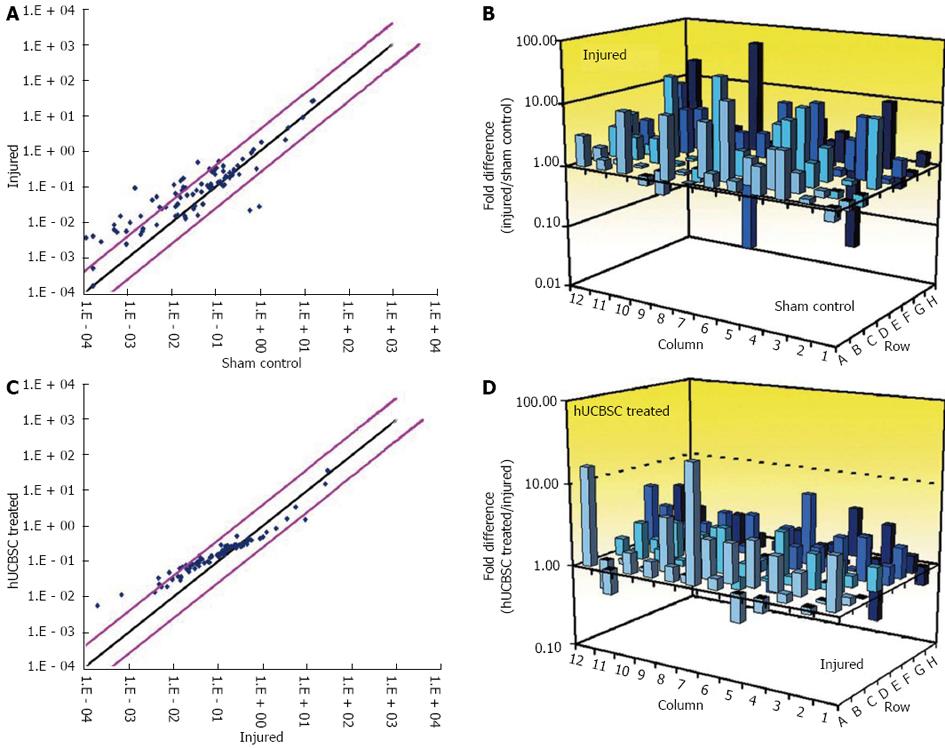Copyright
©2014 Baishideng Publishing Group Co.
World J Stem Cells. Apr 26, 2014; 6(2): 120-133
Published online Apr 26, 2014. doi: 10.4252/wjsc.v6.i2.120
Published online Apr 26, 2014. doi: 10.4252/wjsc.v6.i2.120
Figure 2 Microarray analysis of apoptotic genes after spinal cord injury.
Total RNA was extracted from sham control, 3-wk post-spinal cord injury (SCI), and 3-wk post-SCI plus human umbilical cord blood-derived mesenchymal stem cells (hUCBSC)-treated tissues, reverse-transcribed, and the corresponding cDNA was loaded into a 96-well plate. In each group, RNA from at least three different animals was pooled together. A and C: Representative scatter plots show the validity of the experiment and the expression level of each gene in the control vs injured and injured vs hUCBSC-treated samples; B and D: These 3D profile graphs show the fold difference in expression of each gene between sham control vs injured and injured vs hUCBSC-treated samples. These experiments were performed in duplicate (hUCBSC, human umbilical cord blood-derived mesenchymal stem cells; SCI, spinal cord injury). J Neurotrauma 2009; 26: 2057-2069.
- Citation: Dasari VR, Veeravalli KK, Dinh DH. Mesenchymal stem cells in the treatment of spinal cord injuries: A review. World J Stem Cells 2014; 6(2): 120-133
- URL: https://www.wjgnet.com/1948-0210/full/v6/i2/120.htm
- DOI: https://dx.doi.org/10.4252/wjsc.v6.i2.120









